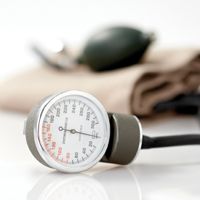Study Compares Effectiveness of Popular Blood Pressure Monitors
A trial of 3 automated blood pressure cuffs indicates that two of the devices provide reasonably accurate readings for patients with atrial fibrillation (AF).

A trial of three automated blood pressure cuffs indicates that two of the devices provide reasonably accurate readings for patients with atrial fibrillation (AF).
Investigators randomized 48 hospital patients to 10 consecutive measurements with an Omron R7 and an Omron HEM907 or with an Omron R7 and a Watch BP Home. They then used within-subject variation and intraclass correlation coefficient (ICC) to gauge each device’s accuracy.
The OR7, which measures blood pressure at the wrist rather than the arm, failed even to produce 10 consecutive measurements in any of patients. The HEM907 provided 10 consecutive measurements in 35% of the patients (ICC for systolic readings, 0.94; ICC for diastolic readings, 0.77) The Watch BP provided 10 consecutive measurements in 88% of patients (ICC for systolic readings, 0.92; ICC for diastolic readings, 0.79).
The investigators also did invasive blood pressure measurements on another 10 patients and then randomized those patients to either the HEM907 or the Watch BP. Measurements from the HEM907 correlated significantly better with the invasive measurements (r=0.92 for both systolic and diastolic readings) than did the measurements from the Watch BP (r = 0.85 for systolic readings; r = 0.52 for diastolic readings).
“Compared to invasive blood pressure measurements, the limits of agreement for systolic and diastolic blood pressure were quite wide for both devices. However, when individual systolic and diastolic blood pressure measures were averaged, the agreement improved except for the HEM systolic blood pressure,” the study authors wrote in the Journal of Hypertension.
“The wrist device cannot be recommended for clinical use in patients with AF. Both arm devices are reliable in patients with AF when they manage to measure blood pressure; however, their accuracy seems better for systolic than for diastolic blood pressure. The repetition of measurements improves their accuracy compared to invasive blood pressure measurements.”
The authors of the new study noted the difficulty of measuring blood pressure in AF patients, the controversy that still surrounds the use of automatic devices and existing guidelines that recommend traditional measurements.
Older studies have reached conflicting conclusions about the accuracy of automated devices, according to a 2012 meta-analysis of 12 earlier validation efforts that also appeared in the Journal of Hypertension. The pooled correlation coefficients between automated and manual devices used on 566 patients was 0.89 for systolic readings and 0.76 for diastolic ratings.
The mean difference was within 5 mmHg for systolic blood pressure in 6 of 6 studies that provided such data. The mean difference was within 5 mmHg for diastolic blood pressure in 4 of 6 those 6 studies. The standard deviation of mean difference was within 8  mmHg for systolic blood pressure in two of four studies and, for diastolic blood pressure, in 3 of those 4 validations.
The meta-analysis also noted that automated measurements tended to be higher than manual measurements.
“There is limited evidence and significant heterogeneity in the studies that validated automated blood pressure monitors in atrial fibrillation. These monitors appear to be accurate in measuring systolic blood pressure but not diastolic blood pressure,” the authors of the meta-analysis wrote. “Given that atrial fibrillation is common in the elderly, in whom systolic hypertension is more common and important than diastolic hypertension, automated monitors appear to be appropriate for self-home but not for office measurement.”